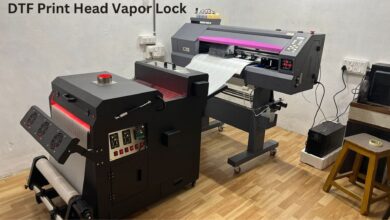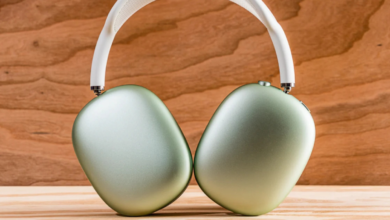Product Saturation Detection in Dropshipping: Cross-Platform Ad Frequency Analysis

Dropshipping offers immense potential for entrepreneurs to launch businesses with minimal upfront investment. However, navigating this business model requires careful attention to product viability. One of the key challenges dropshippers encounter is identifying whether a product is oversaturated in the market. Selling a product with dwindling demand or high competition can be a costly mistake.
This is where product saturation detection comes in—specifically using cross-platform ad frequency analysis to identify market saturation. By studying metrics like ad frequency, competitor spending, and market penetration, dropshippers can evaluate opportunities versus oversaturated niches. This article offers a comprehensive technical guide to using spy tools and analyzing saturation metrics across Shopify, Facebook, and TikTok.
Understanding Product Saturation in Dropshipping
Before we get technical, we must first define product saturation in the context of dropshipping. Product saturation occurs when the demand for a product plateaus or decays due to one or more of the following:
- Excessive competition.
- Mass advertising reducing interest (ad fatigue).
- Limited scalability within a specific target audience.
Instead of jumping on the bandwagon of trendy products, savvy dropshippers use data-driven strategies to evaluate market saturation. Cross-platform ad frequency analysis offers a way to monitor product visibility and advertising trends from multiple vantage points.
Key Metrics for Tracking Product Saturation
To detect product saturation effectively, dropshippers need to monitor a mix of quantifiable data points. Here are the primary metrics to track:
1. Ad Frequency Tracking
Ad frequency refers to the average number of times a particular ad is shown to the same audience. High ad frequency often indicates that a product has already reached its peak in terms of marketing exposure. For example:
- Low frequency (1-2 ads): A product is still being tested.
- Medium frequency (3-6 ads): Advertisers are scaling efforts.
- High frequency (7+ ads): Increased likelihood of audience fatigue due to oversaturation.
Most ad spy tools, such as AdSpy or BigSpy, allow users to filter for ad frequency. By comparing trends across platforms (e.g., Facebook Ads vs. TikTok Ads), you can easily pinpoint whether a product’s potential is still untapped.
2. Competitor Ad Spend Analysis
Tracking competitor ad spending offers insights into a product’s longevity and current competitiveness. Tools like Facebook Ads Library and TikTok Creative Center provide transparency into ad campaigns, letting you check:
- The number of active ads for a target product.
- How much effort (and budget) competitors are pouring into promoting it.
- The duration of each ad campaign (long-lasting campaigns often mean strong conversions).
For Shopify sellers, using tools like SimilarWeb or ShopHunter can help estimate traffic sources and promotional intensity for certain stores.
3. Market Penetration Indicators
Market penetration evaluates how deeply a product has already captured its intended audience. To calculate this, measure:
- The number of unique sellers offering the product.
- Reviews and social proof on product pages or stores.
- Product searches or hashtags across TikTok, Instagram, or Pinterest.
If too many stores sell the same product and generic duplicates flood the market, the product’s uniqueness and scalability may decline.
Platform-Specific Analysis Frameworks
Each platform offers unique clues to product saturation. Here’s how to interpret metrics on Shopify, Facebook, and TikTok:
Shopify – Storefront Analysis
Shopify spy tools like ShopHunter or Commerce Inspector track storefront performance metrics such as:
- Product Visibility Scores – High-visibility products may already be saturated unless heavily optimized.
- Store Performance Trends – Sharp declines in sales or traffic signify falling demand.
- New Product Launch Timelines – Rapid replication of trending products indicates a competitive chassis.
Using competitor insights gathered from Shopify tools, prioritize products with low duplication rates but consistent performance.
Facebook – Ad Library Metrics
The Facebook Ads Library provides a reliable database for analyzing competitor efforts. Focus on:
- Ad Longevity – Ads running longer than 30 days with consistent updates signal high performance but possible upcoming saturation.
- Engagement Metrics – High engagement (e.g., likes, comments, shares) on older ads could mean residual popularity, whereas recent low engagement suggests ad fatigue.
- Regional Data – Check where ads are being targeted. Expanding to untapped locations may still offer opportunities.
Facebook’s detailed data filters allow dropshippers to track evergreen products that bypass saturation.
TikTok – Trends and Hashtag Popularity
TikTok is an ideal platform for spotting early-stage trends before saturation hits. Utilize the TikTok Creative Center for insights into:
- Top-Performing Videos – Check videos advertising products similar to yours for views, hashtags, and publishing dates. Older trending videos may indicate saturation.
- Hashtag Monitoring – Track hashtags like #TikTokMadeMeBuyIt alongside product-specific keywords to assess how widely it’s being shared.
- Viral Decay Rates – Review viral product timelines. If popularity stagnates, it may signify oversaturation.
TikTok’s short-form, highly visual format means trends burn out faster than on traditional platforms, requiring extra vigilance.
Cross-Platform Data Integration for Competitive Intelligence
Singular platform analysis can leave gaps in your competitive data. A multi-platform approach gives a more comprehensive view of saturation metrics. Here’s a step-by-step process to integrate cross-platform data collection into your strategy:
- Select Spy Tools
Use tools like AdSpy, My Ad Library, or SimilarWeb that provide insights across multiple platforms. Combine this with TikTok Creative Center and Shopify-specific tools for precision.
- Standardize Metrics
Align data points like ad frequency, ad spend, and engagement metrics across platforms. For example, compare TikTok’s organic product hashtags to Facebook’s long-term ad campaigns.
- Track Seasonal Trends
Use external platforms like Google Trends to map demand shifts. By aligning platform-specific ad data with broader seasonal trends, you can predict peaks and avoid oversaturated niches.
- Create Competitive Dashboards
Use tools like DataBox to integrate data into a single dashboard. Include metrics such as competitor growth rates, product review counts, and CTR to tailor insights for specific products.
- Set Saturation Benchmarks
Define thresholds based on saturation insights:
- High saturation = 10+ sellers and 10+ ads at high frequency.
- Medium = 5-10 sellers with moderate ad spend.
- Low = Less than five sellers, testing-stage ads.
Avoiding Oversaturation and Spotting Growth Niches
While analyzing saturation is essential, dropshipping success often lies in preemptively spotting opportunities. Here are two tactics to achieve this:
Monitor Early-Stage Trends
Use TikTok’s Discover Page, Pinterest Pins, or Amazon Movers and Shakers to spot burgeoning niches. These trends rarely hit saturation immediately, offering plenty of room for strategic scaling.
Focus on Value Differentiation
Even saturated products can succeed if positioned uniquely. Use premium packaging, upsell bundles, or focus on better customer experience to rise above competitors.
Taking Action with Confidence
Product saturation is an inevitable challenge in the fast-paced world of dropshipping, but with the right tools and frameworks, it’s one you can tackle head-on. Cross-platform ad frequency analysis offers a robust method for understanding market dynamics, identifying oversaturation, and uncovering potential growth niches.
Start by exploring platforms like Shopify, Facebook, and TikTok through spy tools and competitive benchmarking. Integrate your findings across platforms, and don’t forget to act on early insights to heighten your chances of success.





